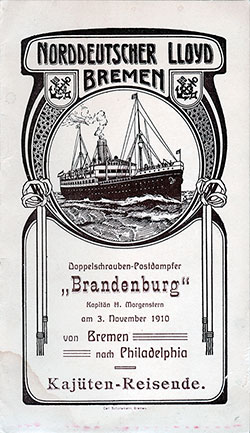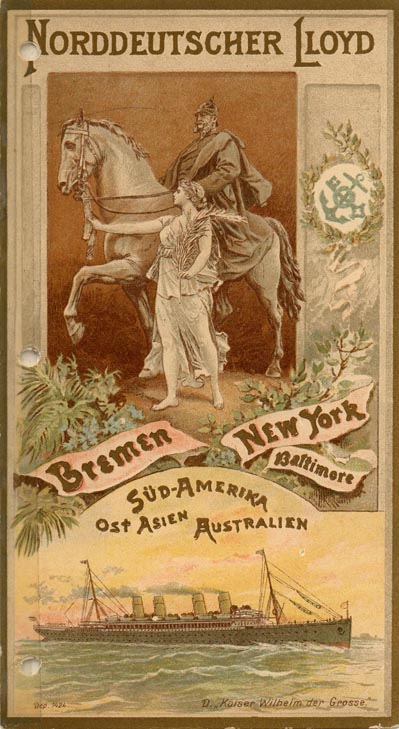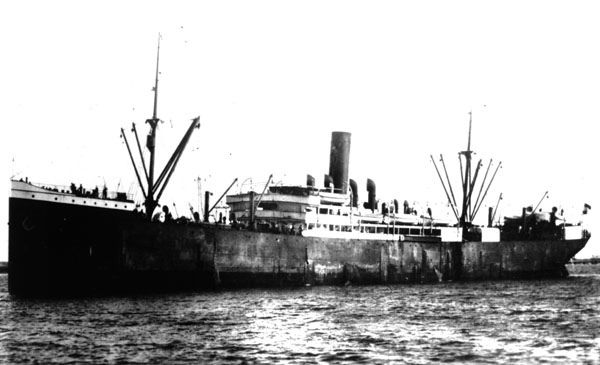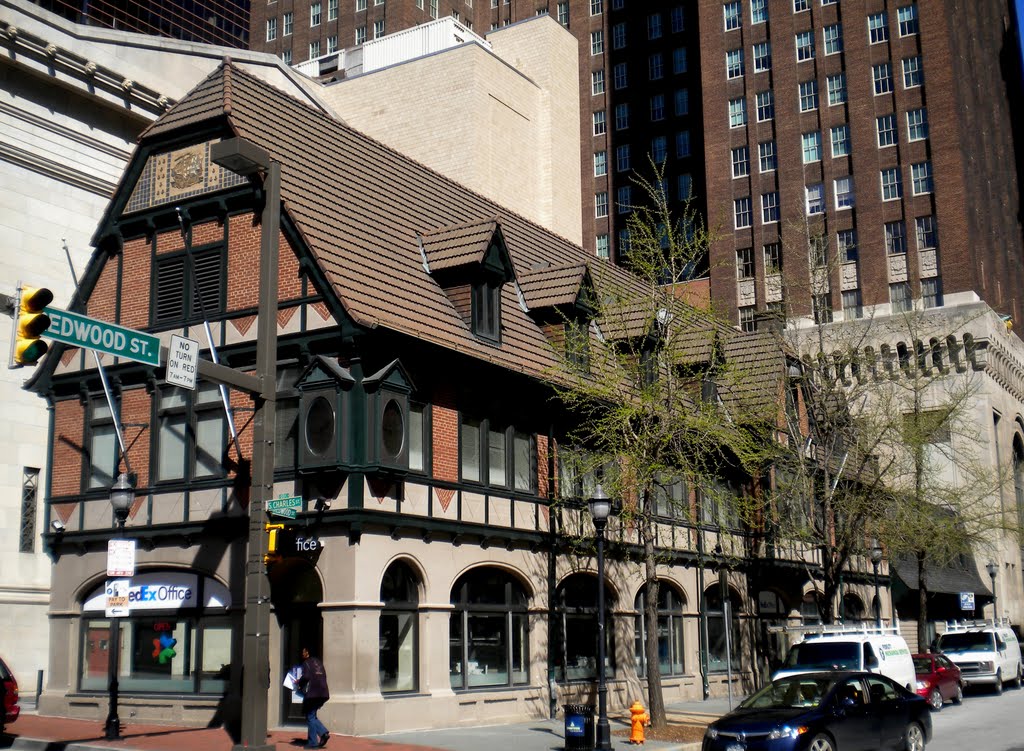Anyone who is a descendant of Bores and Pauline Tarses can trace their lives in America back to the SS Brandenburg.Back to Other SubjectsThe Brandenburg. The SS (Steam Ship) Brandenburg was built in 1901 for the Norddeuetscher (North German) Lloyd Shipping Line. This company is still in business and still based in Hamburg, Germany. It now called Hapag-Lloyd. You may have seen the company's name on trucks carrying shipping containers. The Brandenburg was built to transport immigrants to the United States from Europe. The ship carried 60 second-class passengers and 1,700 third-class or steerage passengers.
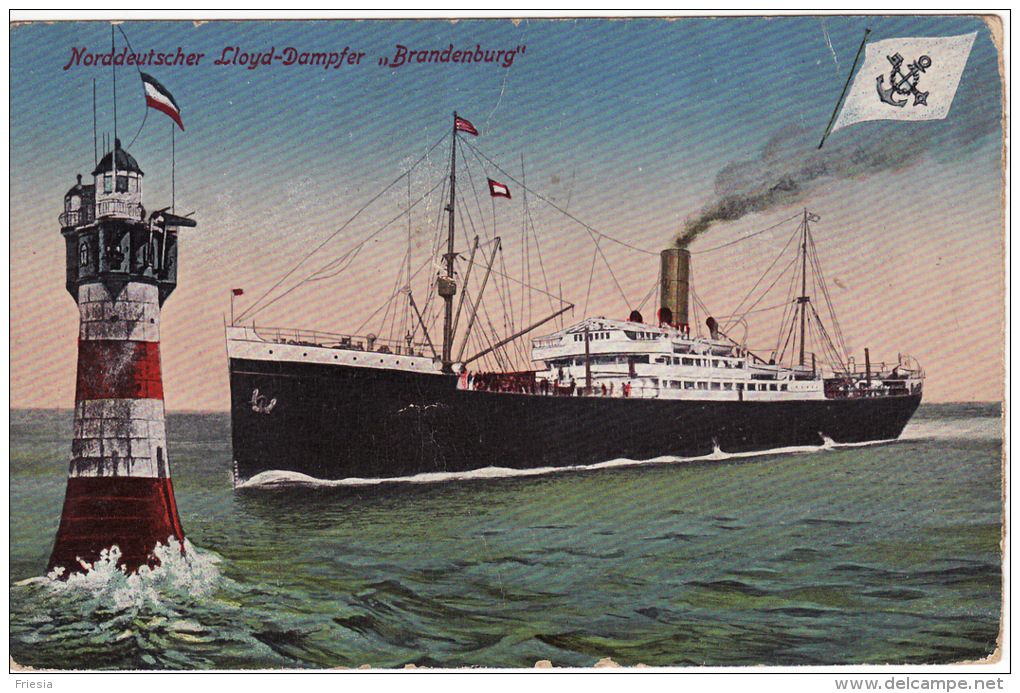
The Voyage. Bores Tarses departed Bremen, Germany on September 21, 1904 and arrived in Baltimore on October 8. (The date of arrival is on Bores Tarses' petition to become a naturalized U.S. citizen.) Why did it take 17 days to cross the Atlantic Ocean? Ships like the Titanic could cross the Atlantic in 6 or 7 days. Immigrant ships were built for economy, not speed. The Brandenburg had a top speed of 13 knots (15 miles per hour.) According to a family record, Pauline came to the U.S. later with their 2 children, Bessie and Irv, both born in Odessa. The Brandenburg did not go to Ellis Island. It traveled directly from Bremen to Baltimore. The Brandenburg traveled between Bremen and Baltimore 6 times a year.
German Immigrant Ships. At the time that Bores and Pauline Tarses came to America, there were 2 German companies in the business of transporting European immigrants to America, the Hamburg-America and North German Lloyd shipping lines. Both companies charged $50 for steerage. Immigrant ships based in the Black Sea and the Mediterranean were cheaper than German immigrant ships; however, on ships with the lowest fares, there was a high mortality rate due to overcrowding, unsanitary conditions, and tainted food and water. On the cheapest immigrant ships, as many as 10% of the passengers died on the voyage and another 10% became infected with contagious diseases resulting in the U.S. Immigration Service sending them back where they came from. German immigrant ships had a reputation for being cleaner and less crowded, and German ships had doctors and infirmaries aboard. Even so, life aboard immigrant ships for steerage passengers was miserable. The German food served to steerage passengers was safe to eat, but it was often unfamiliar, unappetizing, and not kosher. A typical dinner on the Brandenburg consisted of boiled beef with cabbage, potatoes, and black bread. The American banker J. P. Morgan set the fares on German immigrant ships in order to prevent price wars between the 2 companies.
World War 1. In order to avoid being confiscated by the British navy during World War 1, the Brandenburg was sold to Lloyd Italiano Lines in 1915 and was renamed the Lloyd Sabudo. Italy was neutral at that point in the war. The ship then sailed to Trondheim, Norway where it was interned for the duration of the war. Norway was neutral throughout World War 1. In 1919, the ship was surrendered to Great Britain for war reparations. In 1922, the Brandenburg was accidentally rammed in Constantinople (now Istanbul). Because of the ship's age and extent of the damage, it was not worth repairing. The ship was scrapped in Italy in 1925.
Hansa Haus, Baltimore. The Lloyd shipping line had a beautiful U.S. headquarters building in downtown Baltimore named the Hansa Haus, built in a classic German style. The building is still there and looks just as it did in 1912 when it was built. It is on the corner of Redwood and Charles Streets. The building also housed the German consulate. During World War 1, the upper floor of the building was used by the German government as their control center for sabotage and espionage throughout the United States. The 1916 Black Tom explosion, which did massive damage to the Statue of Liberty, was plotted there. The Germans also manufactured time bombs in the building, which they placed on ships headed for England and France. When the U.S. government found out what was going on in the Hansa Haus, they confiscated the building. Until World War 1, Redwood Street was named German Street, but during the war, all the streets in Baltimore with Germanic names were renamed.
Getting Out in the Nick of Time. If Bores and Pauline Tarses had waited just a few more months or even weeks before leaving Russia, they might never have gotten out. In February 1904, Japan declared war on Russia, and Bores was subject to reconscription. The Russo-Japanese War ended in September 1905, but in October 1905, there was a terrible pogrom in Odessa, the worst in the city's history. During the first 3 days of the pogrom, hundreds of Jews were murdered in the streets of Odessa, and thousands were wounded. In addition, thousands of Jewish homes and businesses were looted and destroyed. Policemen and soldiers participated in the pogrom instead of trying to stop it. The pogrom spread from the city to the suburbs and villages beyond. You can see photos of piles of dead Jews on Google Images from the 1905 Odessa Pogrom. After World War 1 began, getting out of Russia became nearly impossible, and in 1924, Congress passed the Immigration Act, cutting off virtually all immigration to the U.S. from Eastern Europe. In the 1930s, Stalin's Terror-Famine caused millions of people to die of starvation in Ukraine. In June 1941, the Germans invaded the Soviet Union, and quickly got control of Ukraine. In September 1941, over 40,000 Jews in Kiev were marched to a ravine named Babi Yar on the outskirts of the city and shot. In October 1941, German forces shot over 50,000 Jews in Odessa. Over the next 2 years, over 1 million Jews were murdered in Ukraine by the Germans and their allies. After the war was over, Bores and Pauline Tarses tried to locate their brothers and sisters who stayed behind in Ukraine, but they were unable to find any who had survived the war.
